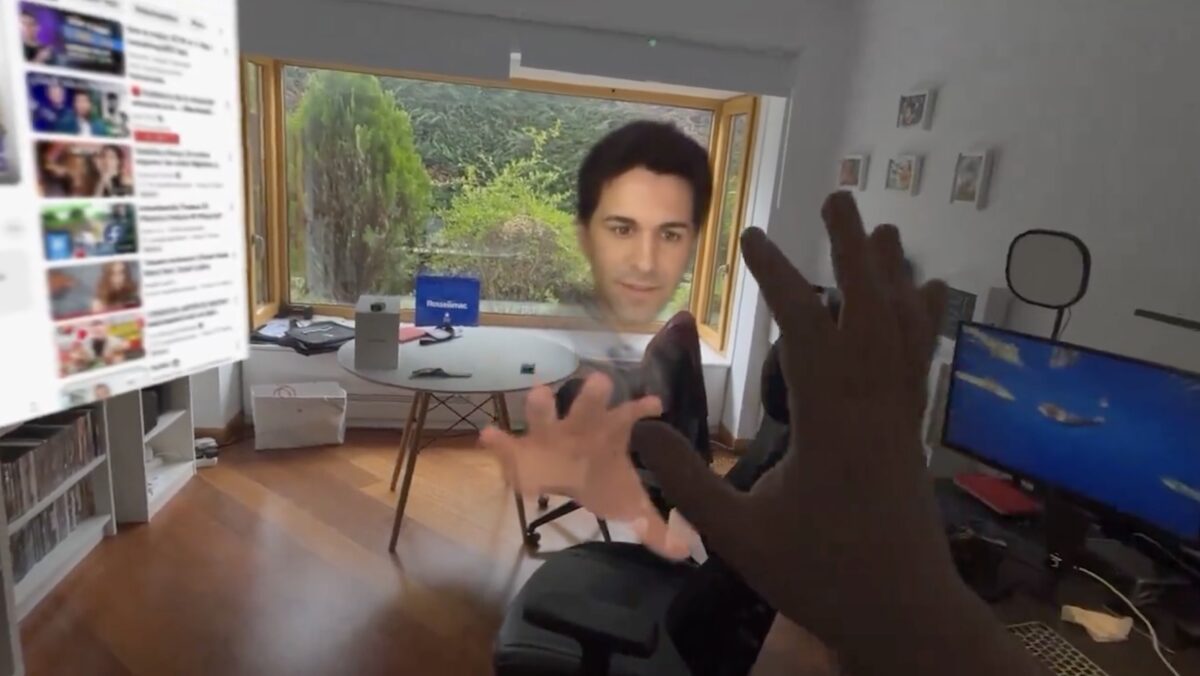Vision Pro users explore what's possible with Spatial Persons

Yesterday, Apple released a beta version of Spatial Personas to Vision Pro users. They are amazed at the telepresence this technology enables.
A new, improved version of Apple's Personas is causing a stir among Vision Pro users.
Personas are created by taking a 3D facial scan with the Vision Pro. The device's sensors then track facial expressions and hands and animate the personas in real time.
Until yesterday, personas were confined to a window like in traditional video chat (see video above). With Spatial Personas, the avatars break out of that frame and can move freely around the room and toward you. This creates a sense of co-presence, or the illusion of being in the same place together.
Spatial personas are activated during FaceTime calls by tapping the call and selecting the respective option. You can then play games, watch movies, or collaborate in real time with up to four other Vision Pro users via SharePlay.
The first videos show Spatial Personas in action
The following videos document the first public uses of Spatial Personas.
In one Twitter video, the co-presence seems so real to users that they try to touch each other with their hands.
Probado el Spatial Persona con @AlbertoCarlier. Una pasada. Ves a la otra persona moverse en tu espacio (espacio que puedes mover y modificar) y automáticamente todas las apps con SharePlay se han activado. Hemos estado viendo un momento de Vengadores Endgame teniendo la pantalla... pic.twitter.com/CDgug99W5F
- Julio César Fernández (@jcfmunoz) April 2, 2024
The following YouTube video shows how 3D objects can be viewed together and manipulated in space. The Vision Pro users also play rock, paper, scissors.
Another YouTube video explores how Vision Pro deals with locomotion.
The next example from Bradley Lynch shows couch co-op with Vision Pro. Lynch plays the 2D scroller Cuphead in co-op mode with Eric Masher via Steam Remote Play.
THIS is how we bring back the idea of couch co-op gaming in the modern age!
Apple Vision Pro's Spatial Personas paired with Steam's Remote Play Together feature allows me and @EricMasher to play the same game on my PC, in the "same room" but from hundreds of miles away pic.twitter.com/OM8s42Rx8x
- Brad Lynch (@SadlyItsBradley) April 3, 2024
In another video, Lynch watches the cult VR movie "The Lawnmower Man" with Youtuber Virtual Reality Oasis and plays a round of Battleship.
Spatial personas are... incredible
I got to have @vr_oasis sit on my couch as we watch a movie, play a couple board games together, and mess around with collaborative apps/screens pic.twitter.com/3z7mPELV9J
- Brad Lynch (@SadlyItsBradley) April 2, 2024
In the last video example, you can see Tested editor Norman Chan and CNET editor Scott Stein playing a round of virtual chess.
.@jetscott and I playing (poorly) the most high tech game of chess using Vision Pro's new spatial personas. An elevated sense of social presence more seamless than uncanny. pic.twitter.com/7MziFmE7HJ
- Norman Chan (@nchan) April 3, 2024
And where is Meta?
Meta Quest still only allows you to meet cartoon avatars, and the system software is not optimized for spatial co-presence in the same way as Vision Pro.
Meta has been demonstrating its research into photorealistic telepresence, known as Codec Avatars, since 2019. The technology has not yet left the research lab and is still waiting to be implemented in products. The Codec Avatars of Mark Zuckerberg and Lex Fridman shown last October were powered by two workstations. In October 2022, UploadVR was told that Meta is still "three to four research miracles" away from bringing codec avatars to standalone headsets.
We hope that Apple's forays into telepresence will accelerate the development and commercialization of Codec Avatars. Rumor has it that a Meta Quest Pro 2 with a first video of the Codec Avatars could be released in 2025.
Note: Links to online stores in articles can be so-called affiliate links. If you buy through this link, MIXED receives a commission from the provider. For you the price does not change.